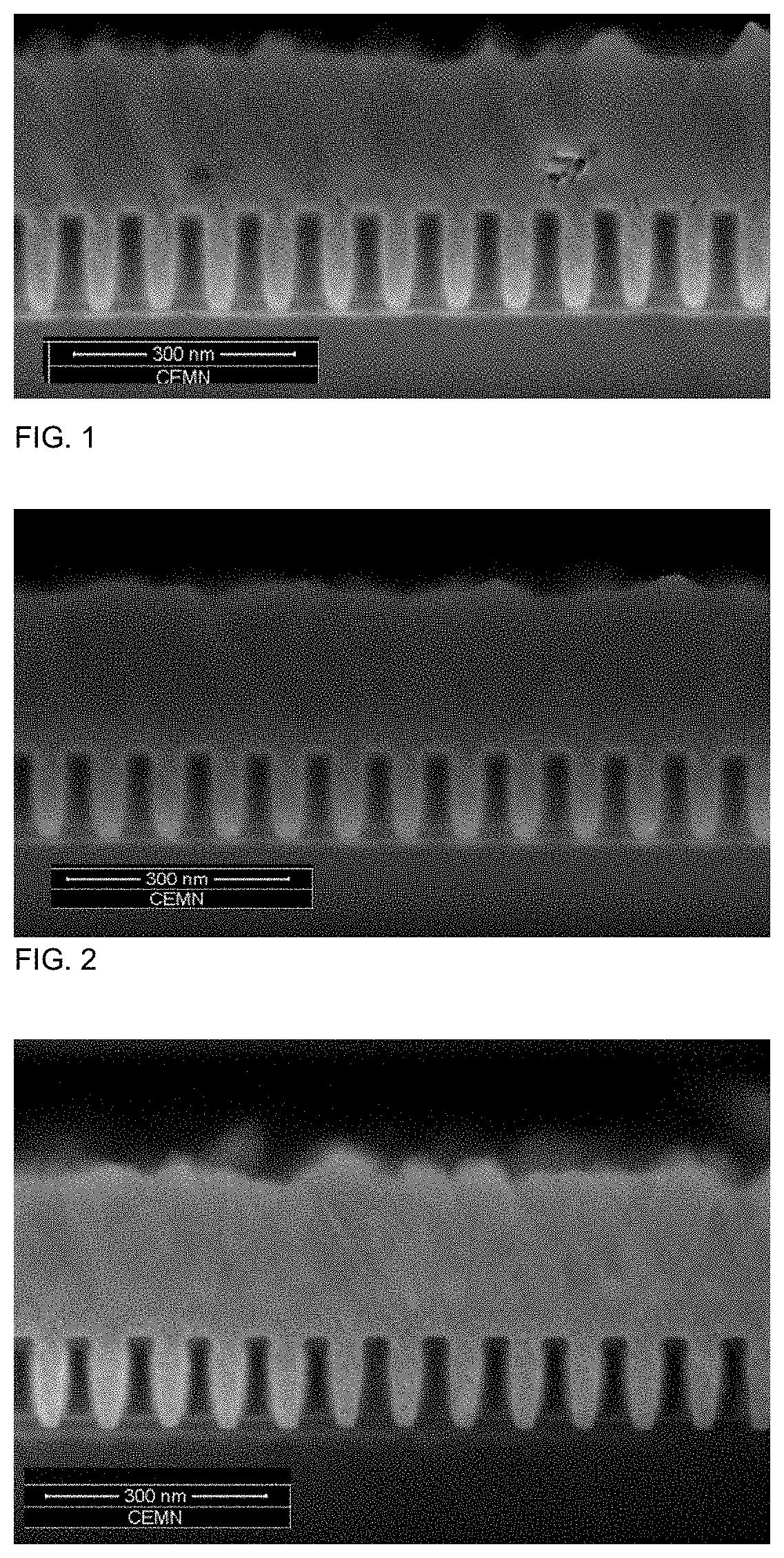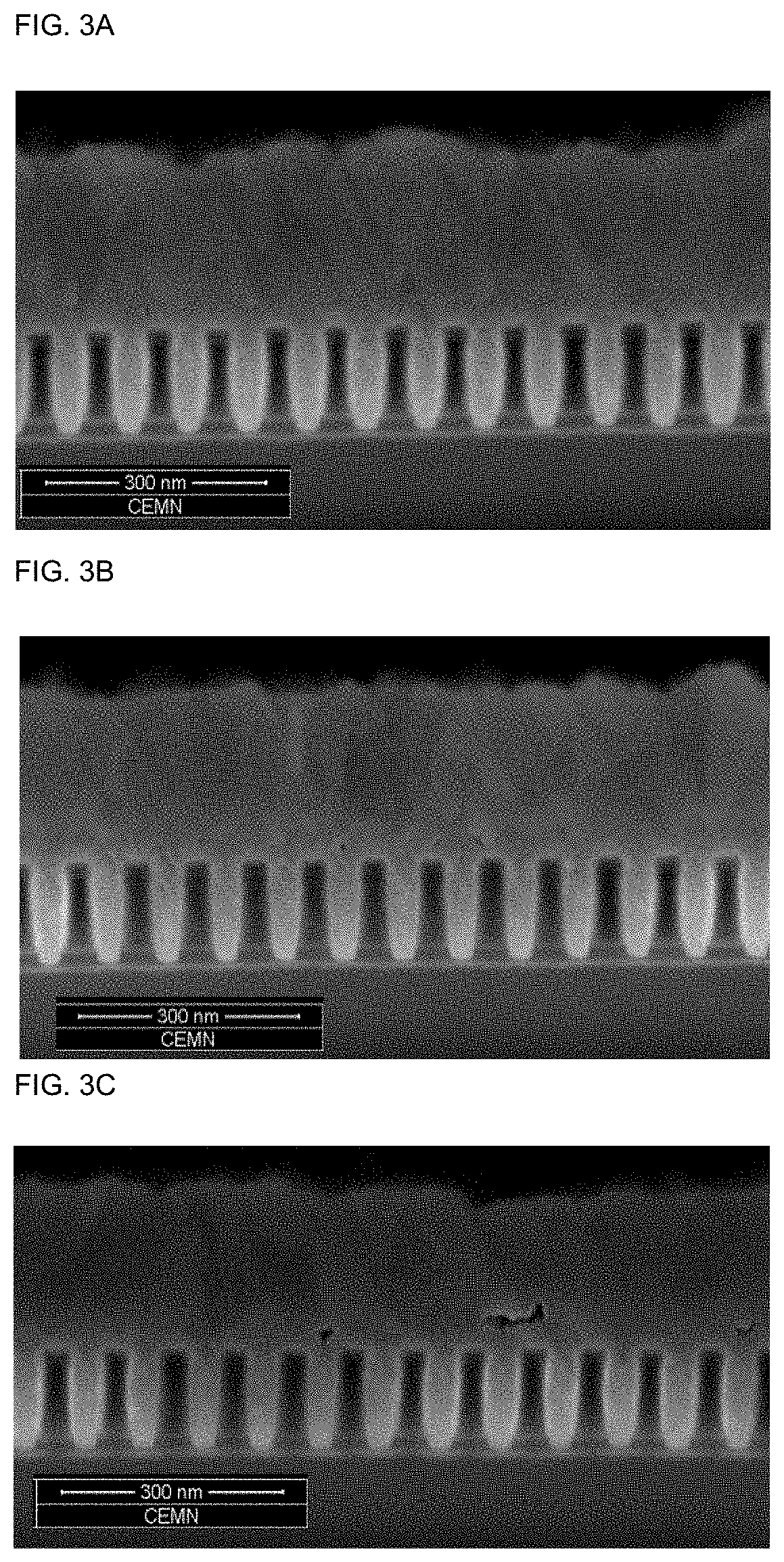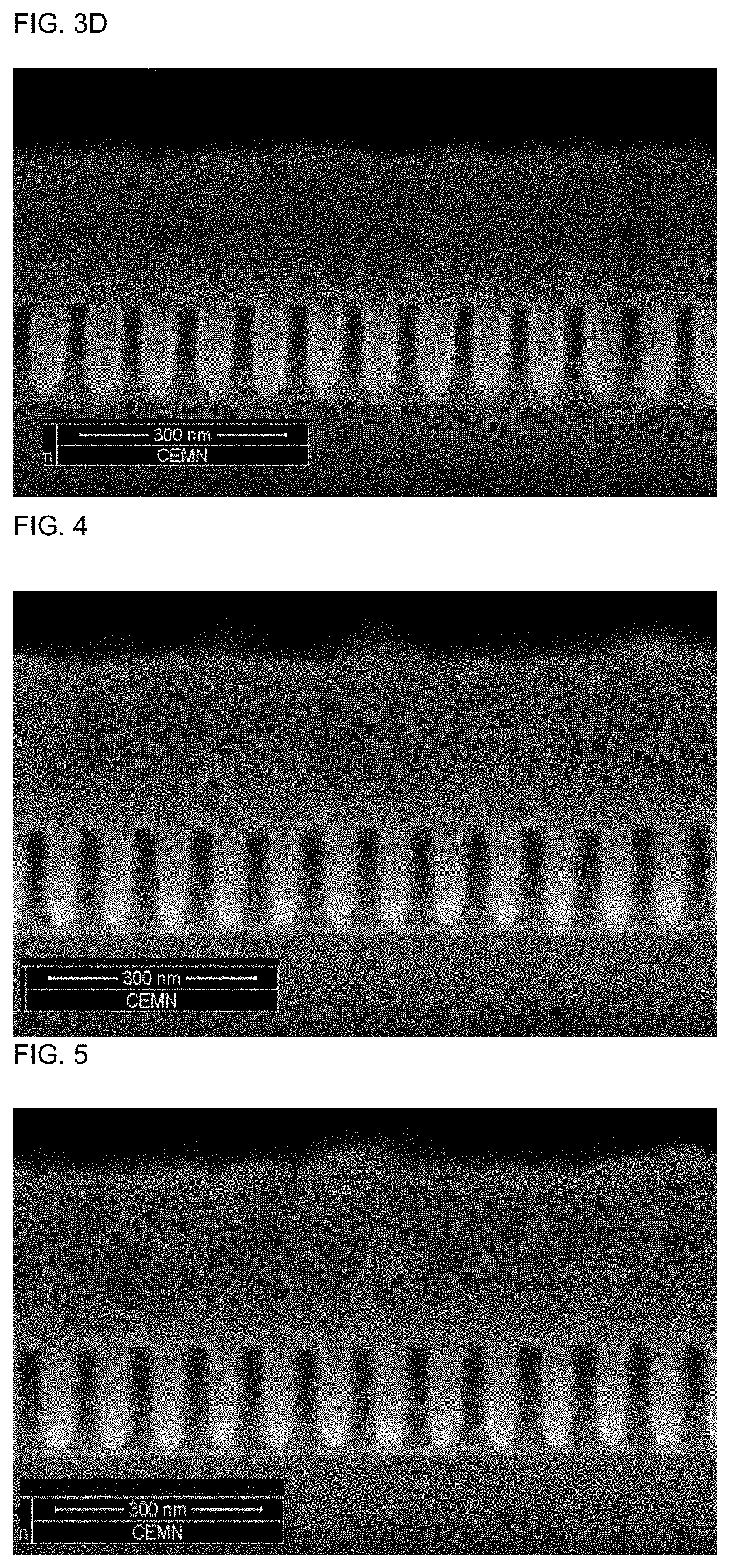Composition for cobalt plating comprising additive for void-free submicron feature filling
- Summary
- Abstract
- Description
- Claims
- Application Information
AI Technical Summary
Benefits of technology
Problems solved by technology
Method used
Image
Examples
example 1
[0187]Plating was done using a potentiostatic setup, immersing the wafer coupon pieces in an electrolyte bath opposite a blank Co anode. The electrolyte was an aqueous Co sulfate-based solution comprised of 3 g / l cobalt, 33 g / l boric acid, and water. The electrolyte was adjusted to a pH of 2.75 with 1 M H2SO4. 5 ml / I of a 0.9 wt % solution of Additive 1 from the list under A was added to the electrolyte as listed in Table 1. The electrolyte was maintained at 25° C. with a pH of 2.75. A patterned wafer coupon bearing trench features of about 30 nm half-high width and an aspect ratio of about 5 was immersed in the electrolyte solution at −1V potentiostatic entry for 0.5 s before galvanostatic control was enabled. Galvanostatic plating then proceeded in a two-step process: Step 1 with an applied current density of 1-5.5 mA / cm2 using an increasing rate of 25 μA / (cm2*s) to deposit 0.7 C / cm2 wherein the wafer coupon cathode was rotated at 100 rpm, and step 2 with an applied current densit...
examples 2 to 8
[0189]Example 1 was repeated with the respective additive added to the plating bath at a dosing specified in Table 1.
[0190]The results are summarized in Table 1 and depicted in FIGS. 1 to 8. FIGS. 1 to 8 show that the cobalt deposition provides the desired gapfill behaviour. This can be derived from the predominantly defect-free filling of the features.
TABLE 1concentrationAdditiveof additiveAdditivedoseformulationconcentrationFig. ofExampleAdditive[ml / l][wt %][ppm]FIB / SEM1Additive 15.00.94512Additive 22.50.922.52 3aAdditive 3a5.00.945 3a 3bAdditive 3b5.00.945 3b 3cAdditive 3c5.00.945 3c 3dAdditive 3d5.00.945 3d4Additive 45.00.94545Additive 55.00.94556Additive 65.00.94567Additive 710.00.99078Additive 85.00.9458
PUM
| Property | Measurement | Unit |
|---|---|---|
| Fraction | aaaaa | aaaaa |
| Fraction | aaaaa | aaaaa |
| Size | aaaaa | aaaaa |
Abstract
Description
Claims
Application Information
 Login to View More
Login to View More - R&D
- Intellectual Property
- Life Sciences
- Materials
- Tech Scout
- Unparalleled Data Quality
- Higher Quality Content
- 60% Fewer Hallucinations
Browse by: Latest US Patents, China's latest patents, Technical Efficacy Thesaurus, Application Domain, Technology Topic, Popular Technical Reports.
© 2025 PatSnap. All rights reserved.Legal|Privacy policy|Modern Slavery Act Transparency Statement|Sitemap|About US| Contact US: help@patsnap.com



